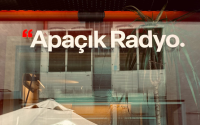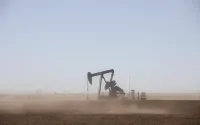Dan PleschWednesday April 9, 2003
The huge psychological victory for the coalition produced by the arrival of US tanks in front of the media centre in Baghdad has not finished off the regime, even though this coup came so soon after their shock arrival at the international airport.
A compilation of the military detail in reports from journalists in Baghdad and an ear for the changing spin from Centcom gives a less victorious picture of the battle for the Iraqi capital than is shown in the media. For example, for three hours on Saturday Centcom said the US was in Baghdad to stay, not on a raid. Then, after some armoured vehicles had been damaged and some troops killed and injured, it became a raid as the troops withdrew. The selective and censored TV coverage obscures a military reality that has been neither as successful nor as difficult as it has seemed. Now, reports of total victory may be premature.
The initial high expectations soon turned into expectations of disaster as we watched the images of US prisoners, sandstorms and ambushes. Then, just as the impact of a real war had sunk in, victory again seemed assured as US tanks dashed into Baghdad and the British took Basra. But President Bush has made the more accurate assessment: Saddam Hussein is losing his grip on Iraq "finger by finger". Unless killing him brings down the regime, it is even possible that civil war will erupt before the coalition has destroyed all organised resistance.
In Baghdad, it appears that most of the 20,000 fighting troops of the US Army 3rd Infantry and 1st Marine Expeditionary Force are still several miles from the central district. The 2nd Brigade of the 3rd Division reached the river but appears to control a narrow strip of land on the west bank of the Tigris, while the other brigades defend the international airport and attack through the northern suburbs. The US does not yet control either the Mansur district, where it tried to bomb Saddam, or the central military airport, both to the north of Saddam's riverbank palaces.
Since the weekend the Iraqis have launched determined counterattacks with Republican Guard and army brigades at the international airport and along the US line of advance to the centre of the city. The Iraqis' most dramatic success was to blow up the HQ of 2nd Brigade with a missile that destroyed 17 vehicles. These events have been reported accurately, with frequent quotations from US officers. But they are reported as details in other stories rather than in their own right. Reporters are rarely in a position to put the different pieces together. The short TV clips of fighting that we see repeated endlessly show how little broadcasters are able to see or allowed to transmit.
It is likely that the Iraqi counterattacks will be exhausted and the US will be able to continue its advance. But the final battles may still be ahead in the inner city, where the US forces would face thousands of anti-aircraft guns and missiles, which are very effective against armoured vehicles at point-blank range. The present lack of anti-aircraft fire against the planes flying low over the city may be because the crews have been sent to the front line. As they retreat they may be able to use their weapons from rooftops against US troops in the streets below. US forces have already had to make less use of helicopters, which are vulnerable to ground fire at close range.
Continuing resistance in Baghdad will mean more fighting in the half-dozen regional centres not controlled by the coalition. So far, only Kerbala has been completely stormed by US troops. Basra is no longer under Saddam's control and the US says it has secured a peace agreement with the Shia clerics of Najaf.
In the Shia south, Basra is to be the showcase for the British model of Iraqi self-rule and Nassiriya will be the prototype of the Pentagon's new Iraq. The Pentagon is trying to install the Free Iraqi Army under Ahmad Chalabi. He has been shunned by most Iraqi expatriates and his presence seems already to have sparked renewed fighting in the town. Events here may influence Shia east Baghdad, where the Marines still hope to spark a revolt upon their arrival.
The Sunni Iraqi heartland of central Iraq has not yet been entered by US forces. But it appears that the 4th Infantry Division is being rushed north from Kuwait to help seize Saddam's home town of Tikrit in another attempt to tip his regime into total collapse. The response of Iraqis in this area, as yet untouched by ground fighting, will indicate how deep Iraqi resistance really is.
In the northern, mostly Kurdish, areas the US apparently has no significant ground attack capability as Turkey refused to allow tanks to be flown in. The Iraqi army has some 100,000 troops in the region and they appear to be fiercely resisting Kurdish attacks backed by US bombing. The US strategy appears to be one of wait and see, and hoping that Kirkuk and Mosul will fall as peacefully as Najaf. But Saddam has spent the last decade changing the ethnic composition of these cities, installing Sunni allies, so there are many well-armed people with nothing to lose.
If fighting in Baghdad is prolonged, the civilian death toll will escalate. At present people are dying from shellfire, bullets and bombs, and the hospitals are already overwhelmed. Soon more and more will die from dehydration and disease. The last hope of the regime may be to hide behind a ceasefire to bring aid to civilians. But, unlike Arab TV, the western version of Death TV is sanitised of the screaming. And as our interactive buttons do not yet offer added smell and there are no computer graphics for body parts, the call to end the suffering will probably fall on deaf ears.
Dan Plesch is a senior research fellow at the Royal United Services Institute [email protected]http://www.guardian.co.uk/Print/0,3858,4643944,00.html






